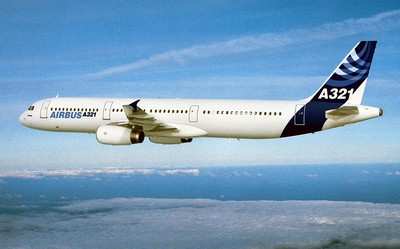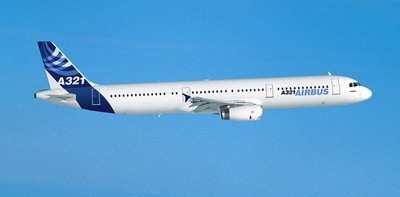AD 2021-22-04 Prompted By A Quality Control Review, Which Determined That The Wrong Aluminum Alloy Was Used
The FAA is superseding Airworthiness Directive (AD) 2019-21-10, which applied to all Airbus SAS Model A321-111, -112, -131, -211, -212, -213, -231, and -232 airplanes.

AD 2019-21-10 required a one-time eddy current conductivity measurement of certain structural parts of the outer flaps to determine if the incorrect alloy was used, and replacement if necessary. This AD continues to require a one-time eddy current conductivity measurement of certain structural parts of the outer flaps to determine if the incorrect alloy was used, and replacement if necessary; and also requires a new one-time eddy current conductivity measurement of certain other structural parts of the outer flaps to determine if the parts were properly heat treated, and replacement if necessary; and includes additional affected airplanes; as specified in a European Union Aviation Safety Agency (EASA) AD, which is incorporated by reference. This AD was prompted by a quality control review, which determined that the wrong aluminum alloy was used to manufacture several structural parts and by the issuance of an updated list of suspected parts, including those that may have been improperly heat treated.
The FAA is issuing this AD to address the unsafe condition on these products. This AD is effective December 27, 2021.

Supplementary Information: EASA, which is the Technical Agent for the Member States of the European Union, has issued EASA AD 2020-0174, dated August 5, 2020 (EASA AD 2020-0174) (also referred to as the Mandatory Continuing Airworthiness Information, or the MCAI), to correct an unsafe condition for all Airbus SAS Model A318-111, -112, -121, and -122 airplanes; Model A319-111, -112, -113, -114, -115, -131, -132, and -133 airplanes; Model A320-211, -212, -214, -215, -216, -231, -232, and -233 airplanes; and Model A321-111, -112, -131, -211, -212, -213, -231, and -232 airplanes. Model A320-215 airplanes are not certificated by the FAA and are not included on the U.S. type certificate data sheet; this AD therefore does not include those airplanes in the applicability.
The FAA issued a notice of proposed rulemaking (NPRM) to amend 14 CFR part 39 to supersede AD 2019-21-10, Amendment 39-19776 (84 FR 63794, November 19, 2019) (AD 2019-21-10). AD 2019-21-10 applied to all Airbus SAS Model A321-111, -112, -131, -211, -212, -213, -231, and -232 airplanes. The NPRM published in the Federal Register on November 20, 2020 (85 FR 74299). The NPRM was prompted by a quality control review, which determined that the wrong aluminum alloy was used to manufacture several structural parts and by the issuance of an updated list of suspected parts, including those that may have been improperly heat treated. The NPRM proposed to continue to require a one-time eddy current conductivity measurement of certain structural parts of the outer flaps to determine if the incorrect alloy was used, and replacement if necessary, as specified in EASA AD 2019-0012, dated January 24, 2019 (which corresponds to FAA AD 2019-21-10). The NPRM also proposed to require a new one-time eddy current
conductivity measurement of certain other structural parts of the outer flaps to determine if the parts were properly heat treated, and replacement if necessary, and to include additional affected airplanes, as specified in EASA AD 2020-0174.
The FAA is issuing this AD to address structural parts that may not meet the certified life limit, which could result in failure of the flap trailing edge and reduced controllability of the airplane. See the MCAI for additional background information.
 NTSB Final Report: Rutan Long-EZ
NTSB Final Report: Rutan Long-EZ ANN FAQ: Turn On Post Notifications
ANN FAQ: Turn On Post Notifications Classic Aero-TV: ICAS Perspectives - Advice for New Air Show Performers
Classic Aero-TV: ICAS Perspectives - Advice for New Air Show Performers ANN's Daily Aero-Linx (06.28.25)
ANN's Daily Aero-Linx (06.28.25) Aero-News: Quote of the Day (06.28.25)
Aero-News: Quote of the Day (06.28.25)




